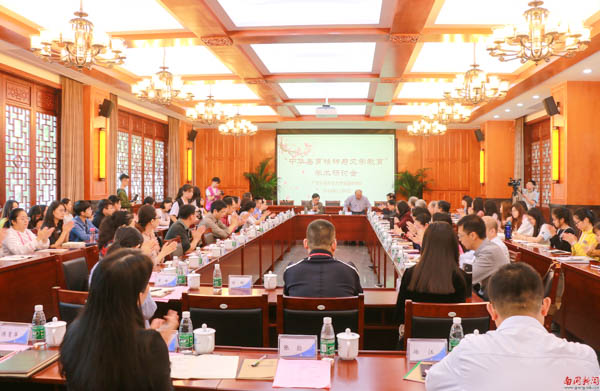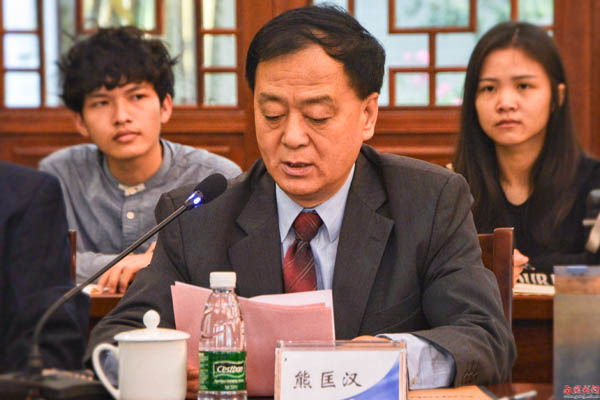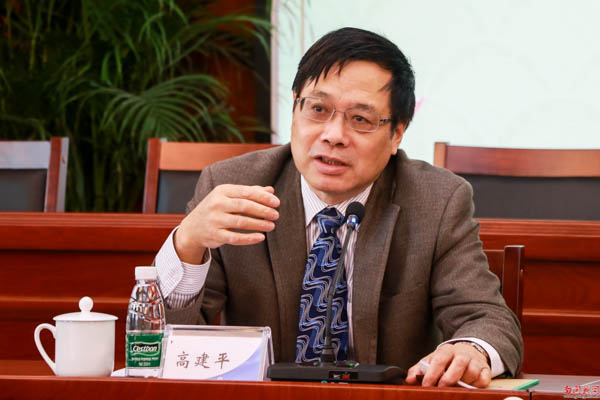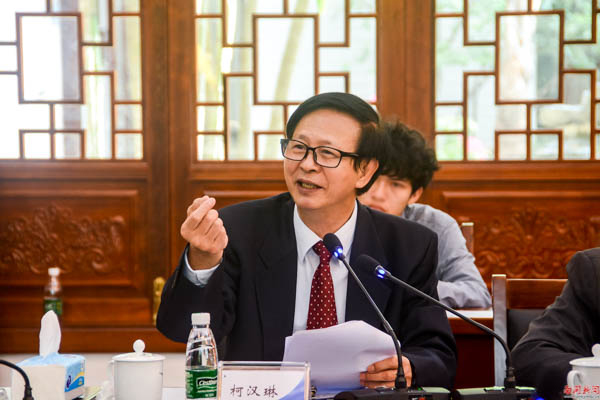SCBC Holds Symposium on the Tradition of Chinese Aesthetic Education & Literary Education
On December 6, experts and scholars from colleges and universities all over the country gathered at the International Conference Hall of South China Business College for the Symposium on the Tradition of Chinese Aesthetic Education & Literary Education.
As Prof. Ke Hanlin, dean of the School of Chinese Language and Culture called the occasion to order, the erudite attendees of the symposium began to share their well-thought and inspiring views and ideas on the themes. They were Prof. Gao Jianping, president of the Chinese Society of Aesthetics and research fellow of the Institute of Literature of the Chinese Academy of Social Sciences, Prof. Jiang Shuzhuo, former secretary of the CPC Committee of Jinan University and president of the Guangdong Association of Writers, Prof. Liu Na, doctoral adviser from South China Normal University, Prof. Wang Kun, doctoral adviser from Sun Yet-sen University and former vice-president of the Guangdong Society of Aesthetics, and Prof. Xiong Kuanghan, vice-president of South China Business College.

Prof. Xiong Kuanghan said that aesthetic education, which also pertains to the provocation of moral righteousness and the nurturing and enrichment of the mind, can not only foster a better sense of beauty, but also exert subtle influence on one’s sentiment, taste, temperament, and judgment. SCBC’s effort on the work of aesthetic education has played its role to improve the comprehensive development of students, particularly regarding their aesthetic appreciation and humanistic literacy. However, if seen from a comparative perspective, aesthetic education remains a weak link for SCBC who still lags far behind in terms of pedagogical resources, teaching staff, and institutionalization. He hoped that SCBC would take advantage of the symposium as a tailwind to step forward in its aesthetic education so as to cultivate students into all-rounders who are ready to commit themselves to the cause of building a socialist country with Chinese characteristics.

Prof. Gao Jianping started with the development of Chinese aesthetics in his speech. Forty years of reform and opening-up had witnessed several turns in the academic discussion of Aesthetics as a discipline, from a focus on image thinking, to orientations towards Marxist philosophy and humanistic ideas, to an urge to find new approaches to Aesthetics of the new era. However, the zeal for Aesthetics studies, though once a prominent brand of philosophy in the past, seemed to fade away in the wake of unprecedented economic and social transformation. In recent years, the defects of an utilitarian “get-ahead-ism” education policy began to manifest themselves. Under the influence of such a policy, people seemed to take for granted that utility was the primal and only value to consider when they had to decide what to read and learn. The result was a general lack of humanistic spirit--a value vital to the healthy development of a society at large-- and hence the all-round development of individuals as envisioned by Karl Marx impeded. Now on a national level, great importance has been attached to Aesthetic education, which is expected to and surely will play its due part in China’s endeavor to realize the Chinese dream, and the academic environment has become more favorable for the studies of Aesthetics, but it is mostly owing to researchers’ concerted effort that any real progress can happen at all in the area.

Prof. Jiang Shuzhuo pinpointed the conundrum of inheriting and developing the Chinese aesthetic traditions in an age of art popularization where the democratization of media enables every individual to be quasi-artist and speak of artistic appreciation. He argued that literature classes should be the first and most important arena for aesthetic education to play a role in college. For example, Literary classics should be included in such classes to help cultivate students’ aesthetic sensibility to art and beauty. For primary schools, measures should be taken to reform artistic education to get rid of the spoon-fed reading. The purpose of artistic learning in this stage of schooling is to stimulate pupils’ interest in art and literature, rather than force it against their will. With a good beginning in primary education, the next important task in line is to maintain such an interest of students’ through their secondary and tertiary stages of education, though the ways to achieved this task remain huge issues that require much further researches and discussions.

After the keynote speeches, Prof. Wang Kun hosted a round-table session on such topics as the tradition of Chinese aesthetic education, traditional Chinese culture, the teaching of literature, and the work of aesthetic education on campus today.

Prof. Ke Hanlin talked about “the tradition of teaching the Classic of Poetry(Shi Jing)” in the discussion. A paradigm in the tradition of Chinese aesthetic education, the teaching of the Classic of Poetry institutes a moral pursuit of cultivating in the learners a Chinese ideal of character that values compassion and benevolence, which is in line with the advocate of traditional Chinese culture to nourish the impartial and peaceful mind. Yet Prof. Ke believed that to this end the teaching of the Classic of Poetry is more fundamentally instrumental, through which one may arrive at the pinnacle of aesthetic pursuit, that is, the attainment of harmony between the universe and the relative role of mankind in the universal order where the ways of mankind is attuned with those of heaven. In summary, he noted that though the moralizing and transcending power of traditional Chinese aesthetics as manifested in the teaching of the Classic of Poetry should always be applauded, an open-minded attitude is all the more important nowadays. When talking about promoting Chinese aesthetic values, we must look afar from the commanding heights of the times and seek nourishment from the best practices of the Western aesthetic tradition as well as the latest achievements of modern aesthetics studies.


Such an effervescent exchange of academic ideas had indeed enabled the participating experts and scholars to explore many issues of great profundity further and beyond.
时间:Dec 11, 2018 9:11:00 AM
录入者:刘阳